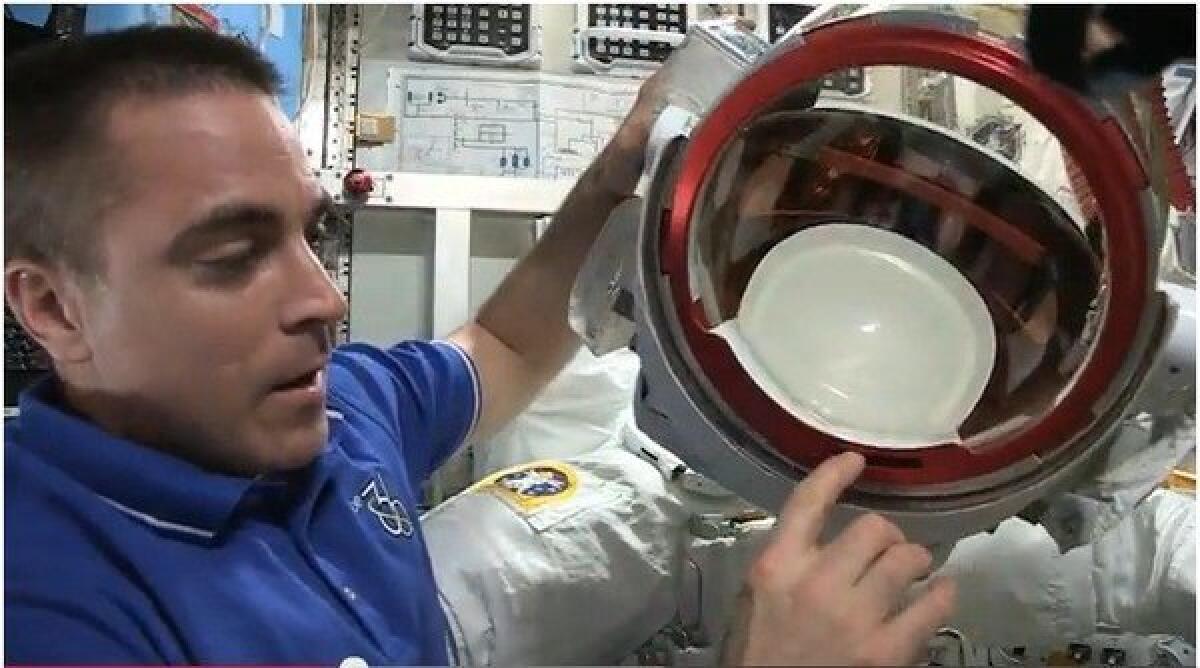What caused ISS astronaut’s helmet leak? A spacewalker explains

When astronaut Luca Parmitano’s helmet suddenly began filling with water as he floated outside the International Space Station, NASA officials said they’d never seen such a malfunction before. Now, NASA astronaut Chris Cassidy explains in a video what happened to make his Italian partner’s helmet leak.
Parmitano, a European Space Agency astronaut who had become Italy’s first spacewalker a week before, was roughly an hour into the July 16 exercise when he said his head felt “really wet.” Even as the team called off the spacewalk, liquid bubbles filled his helmet, ears and nose, even blocking his ability to speak.
“He had water filled up in his ear cups, and it started to creep into his eyes and covered his nose,” Cassidy said. “Scary situation.”
Roughly 1 to 1.5 liters (about 2 to 3 pints) of water had leaked into the suit and helmet, officials later said. Parmitano quickly consumed the contents of his drink-water bag, in case it was the leak’s source, but later noted that the water flooding his helmet didn’t taste like the drinking kind. In the video, Cassidy says the leaking was actually from the suit’s cooling system.
In the back of the helmet’s neck hole, slightly to the left side of the body, there’s a slit in the rim that allows air to go through, Cassidy said in the video. This port links to the ventilation system, which blows air over the astronaut’s face. Somehow, water leaked out and made its way through that slit and into the helmet, where it began to collect in a kind of hard white plastic lining behind Parmitano’s head, soaking his hair. Soon, the water began to spill over the white plastic and float inside the helmet, raising the risk of drowning in the suit.
“You can imagine, you’re in a fishbowl. So go stick your head in a fishbowl and try to walk around – that’s not anything you take lightly,” NASA flight director David Korth said at the time.
The walk lasted about 1.5 hours, though it was supposed to run closer to 6.5 hours. That’s because spacewalks often involve a lot of production, including sleeping in an airlock overnight so the body adjusts to the lower pressure, so the astronauts try to get as much done in one sitting as possible.
Engineers at NASA’s Johnson Space Center in Houston have been working on figuring out exactly what caused the leak into the helmet, Cassidy said.
“The most important thing is that the suits are determined to be safe,” Cassidy said, “so that whenever the next folks get outside, that everything works well for them.”



